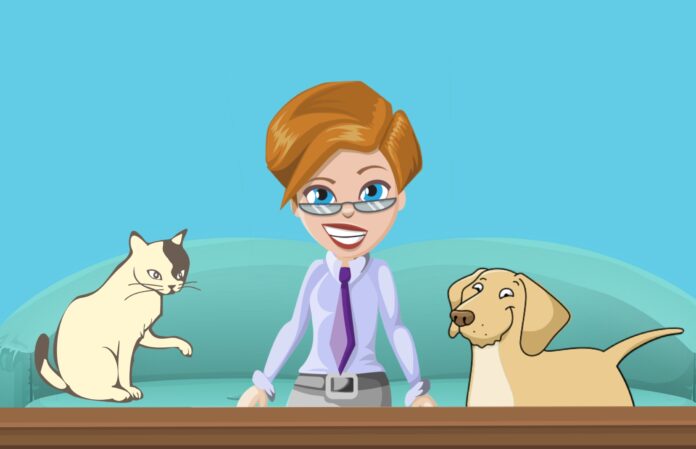The field of animation with its inimitable idiosyncrasies has held the fancy of the creative souls since long now. But before we take a deep dive into the different types of animation, we need to answer one important question. What is animation? Broadly put, it is a visual grammar that makes use of sketches and other graphics to realize a particular scene.
Over time as the principles of animation have diversified, so have its applications. Almost all of the major sectors in this time and day make use of animation as a potent advertising tool. The subliminal chemistry that an animated visual manages to forge with its spectator is primarily responsible for this. To ensure a comprehensive dialogue about this visual medium it’s imperative to dig deep into the different types of animation.
Table of Contents
What is animation
Animation traces its ancestry to mankind’s first attempts dedicated towards documenting motion around them. In that particular capacity animation find its relevance long before the advent of cinematography. Some of the earliest scenes of animation include the manipulated movement of projections on screen stemming from shadow lanterns. Over time, the advent of puppet and clay motion animation alongside stop-motion suitably augmented them. All of these forms cumulatively gave rise to traditional animation.
Early attempts to developing motion in art are frequently observed in several examples of ancient sketches of sequential images. Some of these documentations are as ancient as the Paleolithic era cave paintings. Long before the stroboscopic principles of animation came into being, a large body of animation was rudimentary and rather manual. In its nascent stages, primitive shadowgraphy found its count among leading types of animation as well.
Types of animation
The following section strives to serve as a comprehensive guide towards explaining the different types of animation:
2D Animation
Two dimensional animation refers to sketching out drawings and backgrounds in a two dimensional spatial setting. This particular form is widely counted among the most renowned traditional types of animation. 2D animation is generally carried out and realized in two different stylistic variations. The most popular and the widely known one is what we refer to as the hand-drawn style of animation. The other one is known as the 2d vector based animation which has been gathering significant momentum of late.
While both styles have their own unique merit and credibility, they usually work in tandem towards realizing a 2D project. Hand-drawn animation often finds its inception at an analog level before gradually transitioning into a digital front. This seemingly seamless transition is then brought into fruition with the aid of vector based graphics and motion direction. The manual sketches are transferred frame-by-frame to an acetate sheet for their eventual production and realization.
Some of the widely used 2D animation software includes Synfig Studio, Creatoon, Toon Boom Animate and Bryce among others. These softwares are further classified into beginner and professional utilities based on the kind of utility modules that they pack. When it comes to industry standard digital production, Toon Boom Harmony is the most preferred tool in use.
2D animated movies are among the most celebrated ones in Hollywood and in the movie industry in general. Some of the most popular ones are Lion King, Mulan and One Hundred and One Dalmatians among others. Walt Disney’s Pinocchio (1940) and Bambi (1942) are among the earliest movies to make use of 2D animation. Japanese animation mogul Studio Ghibli is among the most recognized exponents of 2D across the global animation industry.
3D Animation
Three dimensional animations is the most prevalent style among the different types of animation known to us today. 3D animation goes a notch above 2D animation insofar that it allows projections and alterations in the 3D space. Objects animated in the 3D space are rotated and moved very much alike their real time counterparts. This particular philosophy is at the heart of this style of digital animation.
3D animation finds its relevance in a wide range of consumer oriented industries. Primarily it is used as a potent tool in the game engineering and the virtual reality industry. Additionally modern day presentation graphics make use of them because of the flair that it adds to the visual dynamic. 3D animated composition consists of an integrated approach that incorporates both static blueprints as well as moving images.
Some of the popular 3D animation rendering softwares includes Blender, Autodesk Maya, Cinema 4D and ZBrush among others. Adobe illustrator continues to hold its rank among the most user-friendly vector graphic design softwares. Speaking from an industrial point of view Autodesk Maya is the most widely used tool across major animation studios. The modeling flexibility and the architectural freedom that Autodesk Maya poses give it an edge over its competitors.
3D animation movies are among the most visually rewarding movies in the animation industry. Animation studio giants such as DreamWorks, Pixar and Illumination are the biggest exponents of 3D animation spectacles across the globe. Franchises such as Toy Story, How to Train Your Dragon and Kung Fu Panda established themselves as absolute crowd favorites. These movies have found themselves in the good graces of both critics and audiences alike. With the advent of revolutionary technology in the digital graphics scene, 3D animation continues to upscale with every passing day.

Stop Motion Animation
Among the various types of animation, stop motion certainly finds its place among the highly innovative and stylized versions. This filming technique involves taking manipulating the motion of objects in small increments and documenting them simultaneously. In the process the numerous individually captured frames when stitched together seem to mimic real time motion. The creative process involved in making a stop motion film often leads to highly symbolic and thought provoking artworks.
The importance of stop motion animation lies in the way it weaves itself around the viewer’s nascent imagination. The visual grammar of apparent motion registers itself in the most poetic or morbid crevices depending on their psychological construct. Despite its current popularity, the fact of the matter remains that stop motion has an increasingly niche audience. Because of this reason, these movies find wider acceptance in critics’ circles rather than in conventional forums.
Stop Motion Pro Eclipse, Adobe Premiere Pro and Dragon Frame are among the leading softwares used for rendering stop motion. In choosing these softwares frames per second feasibility, key frames and lip-sync support are count as significant parameters. In professional circles, Dragon Frame is the most preferred tool that is actively endorsed by the experts. Its flexibility with different types of attachments in the form of lights, camera and pull focus usually seals the case.
Popular stop motion movies are among the highly critically acclaimed ones as well. Studio Laika is among the primary exponent of stop motion animated movies. Coraline, The Corpse Bride and Kubo and the two strings are some of its widely recognized movies. Wes Andersons’s Fantastic Mr. Fox and Nick Park’s Shaun the sheep are among other well-known stop motion animated works.
Puppet Animation
Puppet animation, often termed as digital puppetry, is among the most primitive types of animation. It traces its origins to the most rudimentary days of entertainment where puppets as concepts marked an escape from reality. Modern day puppetry animation includes rendering 2D and 3D models in animation softwares along with their handmade counterparts. Puppet animation is a more streamlined variant of the all-encompassing stop motion animation and an equally labor-intensive process at that. In the mandatory 24 frames that each second of an animated film demands, a puppet animation yields about 5 seconds.
A typical puppet animation films requires multiple versions of every character that is a part of the movie. Construction of puppets hinge mostly around a metallic skeleton with ball joints and flexible wire components as auxiliary constitutional components. Layers of foam then subsequently cover up this particular frame to render it its eventual physical form.
Adobe Character Animator and Adobe After effects are among the widely used tools in the field of puppet animation. Its dynamic character physics and vastly customizable characterizer make Adobe Character Animator an industry favorite as well. Given that this is a form that doesn’t allow for rehearsals of any kind, software assumes major importance in here.
Russian based animated studio Soyuzmultfim is among the most widely recognized exponents of puppet animation. As a testimony to its rich legacy, the studio also boasts of an impressive archive section. This segment walks the users through the essential evolution of puppetry as an art form. Director Charlie Kaufman’s existential 2015 feature Anomalisa is among the brightest exploits of digital puppetry in recent times. Chris Sullivan’s dark 2012 drama Consuming Spirits also serves as another important addition to this particular art form.
Motion Graphics Animation
Motion graphics animation by virtue of its diverse constitution counts easily among the most inventive types of animation. It generally involves creating an illusion of motion or rotation that hinges around segments of animation or other digital footage. Multimedia projects generally integrate them with audio to facilitate a wider spectrum of utility. Motion graphics doubles up as an umbrella term for all kinds of graphic movements including both 2D and 3D animation.
Motion graphics is that branch of animation that allows for easy realization of dynamic text logos and other concocted illustrations. The motion graphics animated sequences are a great medium for realizing subliminal communication with a broader audience. For this particular reason, motion graphics find their relevance in a horde of commercial ads and other multimedia projects. Their vastly inclusive visual grammar adds layers of depth to the story or plot device at hand. However despite all of its exploits, conventional character animation falls outside its general scope.
Adobe After Effects, Cinema 4D and Adobe illustrator are some of the widely used tools in this particular field. Speaking from an industry point of view, Cinema 4D finds the greatest endorsement in comparison to its competitors. Its vouched after versatility and sophisticated intuitivism makes it a go-to tool for every motion graphics professional.
A simple internet search would bring users in direct correspondence with some of the marvel of motion graphics animation. Created for Australian TV program HungryBeast, Anatomy of a computer virus by Patrick Clair is a primary example of this. Haikus in Motion by Sebastian Girard are a poetic realization that results from the direct collaboration of literature and technology. Coming under the Vimeo staff pick section, Cinematics by Pier Paolo is also a distinctive example of motion graphics animation.

Concluding Remarks
Animation by virtue of its trivial mode of communication effectively unites people of all ages in front of a screen. In the bridges that it burns, it promises vast inclusivity across all genres of entertainment. Artists and creative individuals frequently make use of animation to put forth symbolic messages whose context gets misconstrued otherwise. In the field of education animation is being actively used to enable a friendly representation for an otherwise cumbersome curriculum.
Animated movies are often the first getaways for many individuals into the realms of fantasy and magical realism. In that particular capacity it not only teaches them to embrace the unconventional but also broadens their horizons. Multi-national conglomerates as well budding startups make effective use of animation for expanding and establishing their businesses. Animation is a potent tool for furthering their brand development activities and public relation campaigns. Cutting edge competition in this field increases employment of visual artists and graphic designers in these times.
The evolution of animation from being a medium of entertainment to a multifaceted and multi-utility tool is rather enthralling. Understanding the different types of animation enables us to gain a greater understanding of the immensity of this art form. Across all of its diverse and various manifestations, there is one underlying current of unity that certainly binds them all. And that is the sheer delightfulness of animation. It not only facilitates an escape from reality but it also gives it a tangible direction. In doing so it tethers itself fondly to the subconscious of all of its adoring and ever eager consumers.












